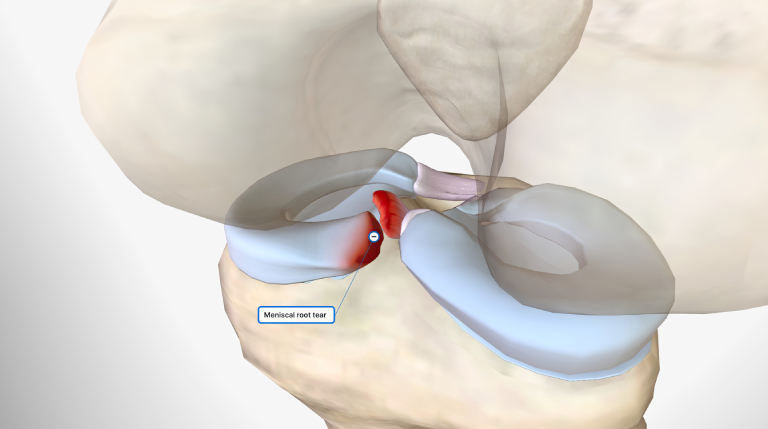Synopsis
Choosing between ACL repair and ACL reconstruction can be challenging without understanding each procedure’s key differences and indications. This blog delves into the nuances of both treatments, explaining how they work and when they are recommended. Under the guidance of Dr. Yugal Karkhur, discover how personalized assessments determine the most suitable approach for each patient. Learn about the surgical techniques, recovery times, and long-term outcomes of ACL repair versus ACL reconstruction. Dr. Karkhur’s expertise ensures that patients receive the best care tailored to their specific needs, enhancing their chances for a successful recovery and long-term knee health.
Introduction to ACL Treatments
The Anterior Cruciate Ligament (ACL) is crucial for knee stability and function, and injuries to this ligament can significantly impact a person’s mobility and quality of life. There are two primary surgical options when treating ACL injuries: ACL repair and ACL reconstruction. Understanding the differences between these treatments is essential for deciding which approach is best suited for your specific injury and lifestyle.
What is ACL Repair Surgery?
ACL repair surgery involves reattaching the torn ligament to the bone. This procedure is typically considered when the tear is located near the ligament’s attachment to the bone, and the tissue quality is good enough to support healing. ACL repair aims to preserve the natural ligament, maintain the original anatomy, and allow for a more natural knee function post-recovery.
Indications for ACL Repair
ACL repair is generally recommended for patients with proximal tears (tears near the ligament’s attachment to the bone) and when the ligament tissue is in good condition. It is often considered in younger patients or those who have sustained an avulsion injury, where the ligament is torn away from the bone with a small piece of bone attached. Repairing the ligament can be advantageous because it maintains the natural biomechanics of the knee.
What is ACL Reconstruction Surgery?
ACL reconstruction surgery involves replacing the torn ligament with a graft, which can be taken from the patient’s body (autograft) or a donor (allograft). This procedure is more commonly performed than ACL repair and is considered the gold standard for treating complete ACL tears. Reconstruction aims to restore knee stability and function by using a new ligament to take over the role of the damaged one.
Indications for ACL Reconstruction
ACL reconstruction is recommended for patients with complete tears or when the ligament is severely damaged and cannot be repaired. It is also the preferred option for individuals involved in high-demand sports or activities that place significant stress on the knee. Reconstruction suits patients of all ages and activity levels, provided they are healthy enough to undergo surgery and commit to the rehabilitation process.
Surgical Techniques- Repair vs. Reconstruction
ACL Repair Surgery Techniques
In ACL repair surgery, the surgeon reattaches the torn ligament to the bone using special sutures, anchors, or other fixation devices. This procedure can be performed arthroscopically, which involves making small incisions and using a camera and specialized instruments to repair the ligament. The primary goal is to preserve the natural ligament, which can result in more natural knee mechanics and potentially quicker recovery times compared to reconstruction.
ACL Reconstruction Surgery Techniques
ACL reconstruction surgery involves creating a new ligament using a graft. The graft can be an autograft (taken from the patient’s hamstring tendon, patellar tendon, or quadriceps tendon) or an allograft (donor tissue). The procedure is typically performed arthroscopically. The surgeon first removes the damaged ACL and then drills tunnels into the femur and tibia to secure the new graft. The graft is threaded through these tunnels and fixed in place with screws or other fixation devices. This new ligament serves to restore stability and function to the knee.
Recovery and Rehabilitation for ACL Repair
Recovery from ACL repair surgery generally involves a faster initial healing process than reconstruction. Patients may experience less post-operative pain and swelling, and preserving the natural ligament can lead to more natural knee mechanics. The rehabilitation program focuses on gradually restoring the knee’s range of motion, strength, and stability. Physical therapy typically starts within the first-week post-surgery and includes exercises to reduce swelling, improve mobility, and strengthen the muscles around the knee. Patients can usually return to light activities within 3-4 months, with a full return to sports or high-impact activities typically taking 6-9 months.
Recovery and Rehabilitation for ACL Reconstruction
Recovery from ACL reconstruction surgery is more intensive and can take longer than repair. The rehabilitation process is crucial for ensuring a successful outcome and involves several phases. The initial phase focuses on controlling pain and swelling, followed by gradual weight-bearing and range-of-motion exercises. Strengthening exercises are introduced as the healing progresses, and proprioception and balance training are crucial for restoring knee stability. Patients typically begin light activities around 4-6 months post-surgery, with a full return to sports or high-impact activities taking 9-12 months. Adherence to the rehabilitation program and regular follow-ups with the surgeon are essential for a successful recovery.
Dr. Yugal Karkhur’s Expertise in ACL Treatment
Dr. Yugal Karkhur’s extensive experience treating ACL injuries ensures that each patient receives a personalized treatment plan tailored to their needs. His approach involves:
- A thorough assessment of the injury.
- Considering factors such as the patient’s age.
- Activity level.
- The extent of the damage.
Dr. Karkhur’s ACL repair and reconstruction expertise allows him to recommend the most appropriate treatment option for optimal outcomes.
Conclusion
Choosing between ACL repair and ACL reconstruction depends on various factors, including the nature of the injury and the patient’s lifestyle and goals. Under the expert care of Dr Yugal Karkhur, patients can be confident in receiving the best treatment tailored to their needs, ensuring a successful recovery and long-term knee health. Whether opting for repair or reconstruction, Dr. Karkhur’s comprehensive approach and commitment to excellence provide patients with the highest standard of care, helping them confidently return to their active lifestyles.

